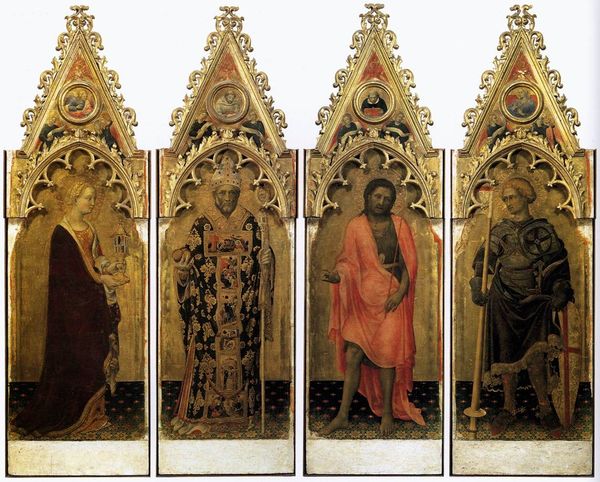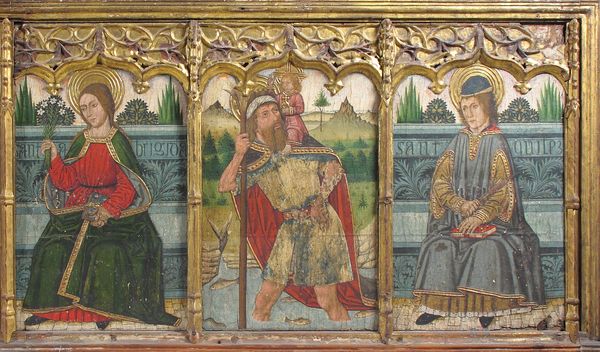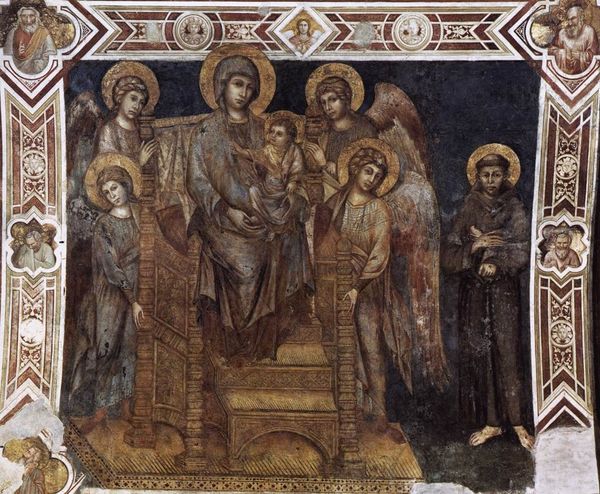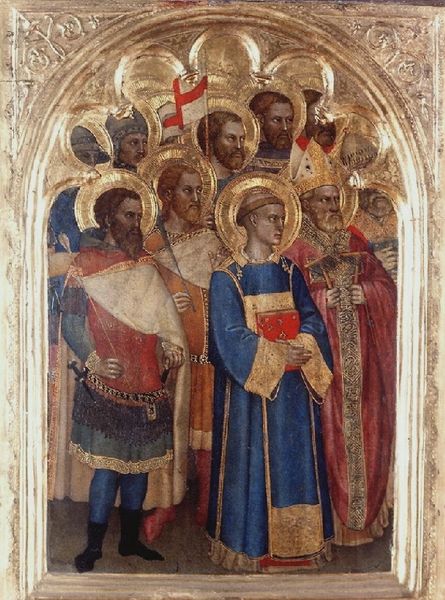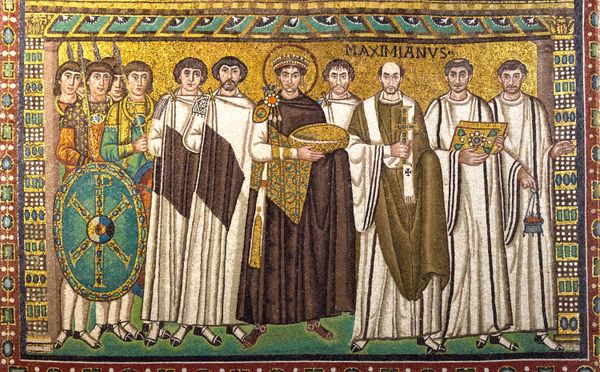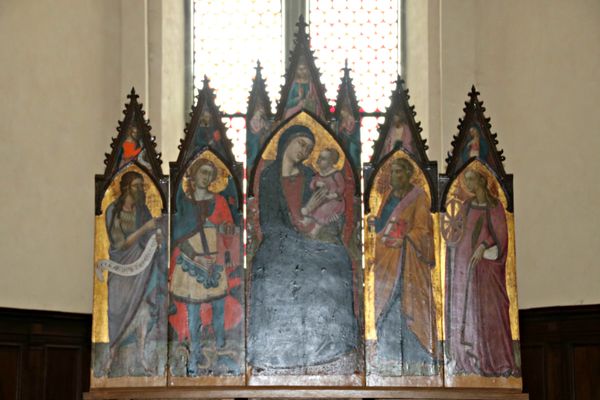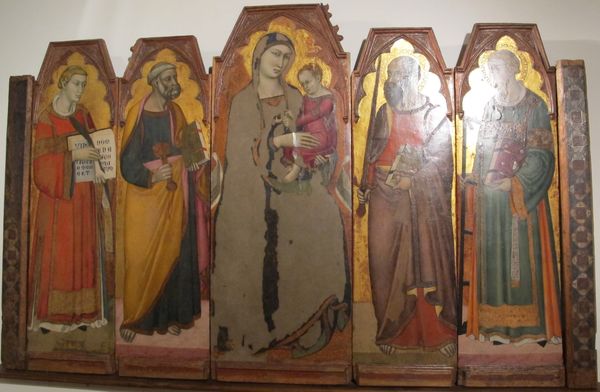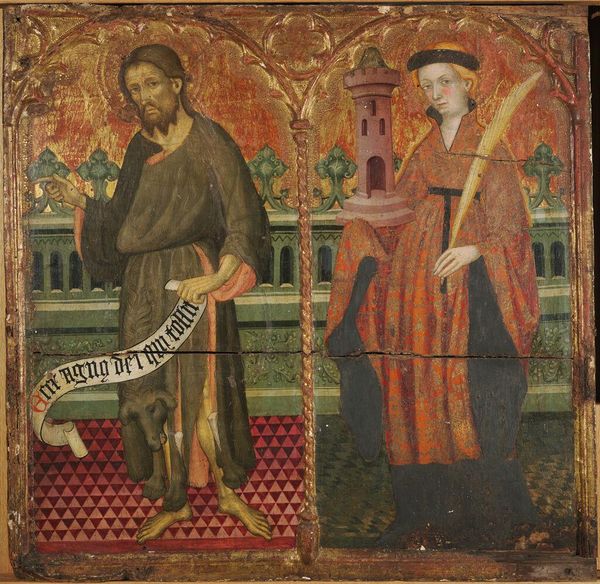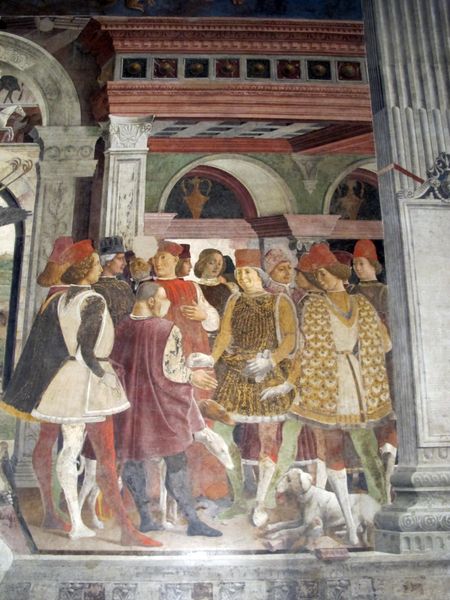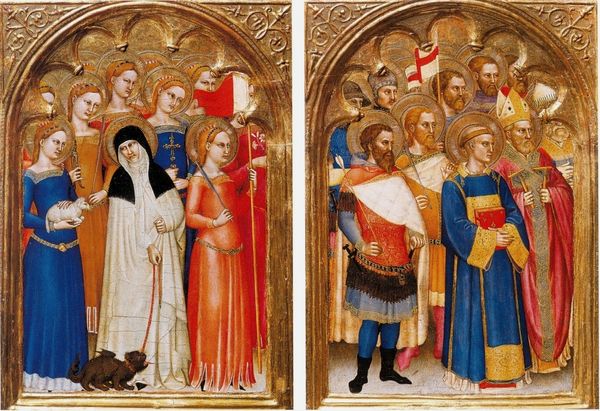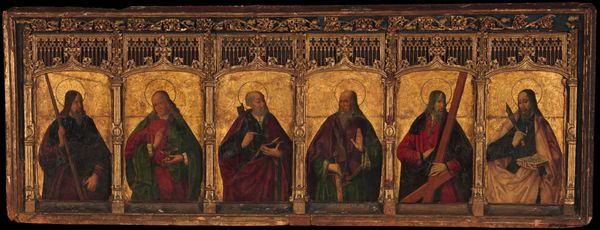
mosaic
#
portrait
#
mosaic
#
byzantine-art
#
medieval
#
sculpture
#
figuration
#
history-painting
Copyright: Public domain
Curator: Welcome. Here we have part of a larger mosaic composition entitled "Church Fathers Order," created around 1030. You can find it within the Saint Sophia Cathedral in Kyiv, Ukraine. Editor: The immediate impression is one of solemnity, wouldn't you say? These figures, each framed by a halo, radiate an almost unnerving sense of spiritual authority. Curator: Absolutely. The figures are constructed from meticulously placed tesserae, tiny pieces of glass and stone. Imagine the labor involved in crafting such detail, the sheer quantity of material transformed by skilled hands into these dignified portraits. The act of production speaks volumes. Editor: And the figures themselves! They are not simply aesthetic objects but embodiments of historical power dynamics. Clothed in ornate vestments signifying their roles, they silently reinforce the authority of the Eastern Orthodox Church in the medieval era. Consider how these images were consumed by the populace. Curator: Right, they carry books which underscore literacy and knowledge as tools. They allude to wealth. But, let's not lose sight of the medium: mosaics. Each tiny piece individually made then fit into a cohesive structure—a process echoing the organization of the medieval clergy and its followers. Editor: I see them in the broader context of gender and power. The Church, as a traditionally patriarchal institution, has historically suppressed marginalized voices, particularly those of women. Curator: True. How might viewing practices have influenced the meaning in the 11th century versus our understanding today? Considering materiality and class, who had the luxury of experiencing these types of mosaics? Editor: Context changes everything. For today’s audience, removed from that direct religious power structure, the mosaic can be interpreted through different theoretical frameworks—queer theory, postcolonialism... to expose embedded systems. Curator: It makes me reflect upon art’s enduring ability to morph through time, continuously being made. Editor: Ultimately, viewing this image allows us to engage critically with our shared history, urging us to examine the social frameworks shaping our perspectives.
Comments
No comments
Be the first to comment and join the conversation on the ultimate creative platform.
